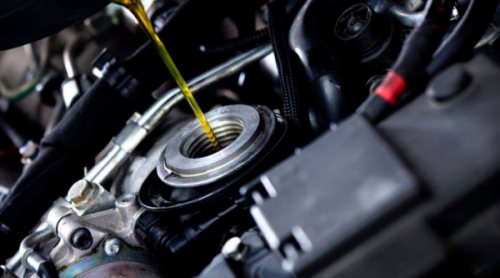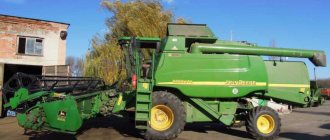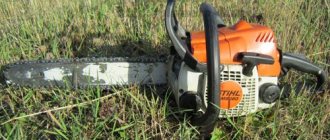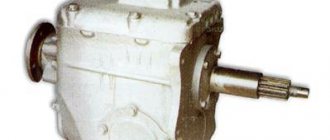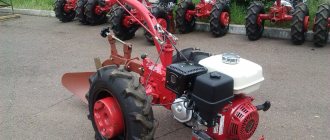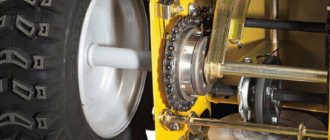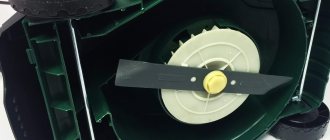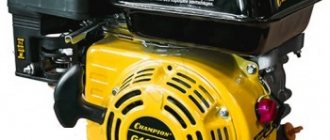What kind of oil should I put in my snow blower?
Oil for a household snow removal machine is one of the main working fluids, responsible for the coordinated and stable operation of the main engine components. To perform its functions, a lubricant must have certain characteristics and contain specific additives. Without them, the liquid will not be able to support the operation of the motor, which is why burrs and other dangerous defects will very quickly appear on its cylinder.
Motor oil for snow blowers must have the following properties:
- the ability to instantly lubricate engine parts at constant extremely low temperatures - the condition of gears and other standard internal combustion engine parts that continuously rub against each other directly depends on this;
- low oil evaporation rate - the lower it is, the lower the lubricant consumption;
- wear protection under high loads - a property responsible for eliminating the formation of burrs and abrasions on the walls of the engine cylinder;
- protection against corrosion – high-quality lubricant prevents the formation of rust spots on the metal parts of the snow blower motor;
- stability to oxidation - the higher this property, the better the liquid interacts with engine components;
- protection against the formation of soot and sludge - high-quality oil for a snow blower should completely evaporate, leaving behind a minimum of waste products;
- the ability to instantly lubricate critical parts and components of a snow blower during a “cold start” of its engine - the wear of rubbing parts depends on this during the period when they have not yet heated up to the optimal operating temperature.
The best lubricating fluids for snow blowers are Husqvarna, Ravenol, Craftsman and Champion. These fluids contain all the additives that guarantee long-term proper operation of the important components of a commercial snow blower.
Types of oils and their features
Oils are divided into three types:
- synthetic;
- semi-synthetic;
- mineral.
Mineral oils
is a product of petroleum distillation. Due to the fact that they contain sulfur, these oils increase the oxidizing properties of the metal. Therefore, the final composition of sulfur should not exceed 1 percent. Various additives are added to improve beneficial qualities. The cost of such oils is the lowest.
Synthetic oils
are obtained by synthesizing various substances, initially have protective properties, are characterized by lower consumption and resistance to extreme loads and temperatures. Due to the expensive production, the output ends up with a high price tag. However, the quality of these oils is much higher.

Semi-synthetic
- an intermediate link, which is obtained by mixing mineral oils and synthetic oils in a ratio of 70 to 30. They have better characteristics and properties than mineral oils, but are inferior to synthetics. Accordingly, the price tag here is average.
| engine's type | Oil type | Characteristics | Price |
| D-242 | M-8G2k | Mineral oil is widely used in Russian cars; it has a large number of useful additives, which increases the time until the next oil change. Suitable for diesel engines. Pour point from -30 degrees. | 570 rubles for 5 liters |
| YaMZ-236M2-4, YaMZ-238M2, YaMZ-238M2-1 | M-8G2k, M-8DM | Universal mineral oil, suitable for Russian and foreign-assembled equipment, has excellent anti-corrosion properties, and is highly resistant to extreme temperatures, which makes the replacement period very long. Temperature of viscosity change from – 30 degrees. Suitable for gasoline and diesel fuel. | 1500 rubles for 18 liters |
| 1D12BMC1 | MT-16p, M-14G2k | MT-16p is a mineral oil for diesel engines. Protects against corrosion, oxidation and wear. Has certification in the Russian Federation. M-14G2k - properties are completely similar. | 1800 rubles for 30 liters (MT-16p) 1650 rubles for 20 liters (M-14G2k) |
In addition, there are universal lubricants
for all types of engines.
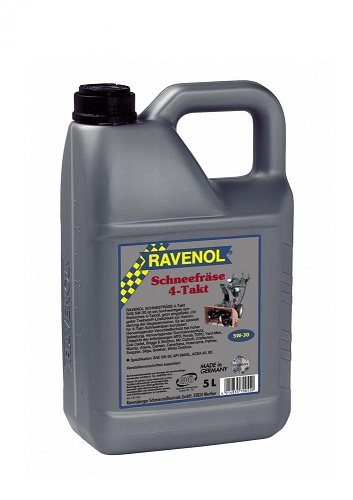
Changing the oil in a snow blower
Changing the lubricant in most snowblowers looks almost the same. For this purpose, each unit is equipped with a special tank, in the upper and lower parts of which there are necks and lids. The upper neck is the filler neck - it is only needed to fill the machine with new oil. The lower neck - drain - is necessary for draining used lubricant.
Changing the oil on a snow blower is usually a DIY job. To do this, the owner of the snow blower will need a wide container, a watering can, old rags and gloves.
The oil change procedure is as follows:
- First you need to start and warm up the engine to operating temperature. Along with the engine parts, the used motor lubricant will also heat up. It will become more liquid and it will be easier for the operator to drain it from the tank;
- After this, you need to smoothly turn off the snow blower’s internal combustion engine and quickly place an old wide container under the drain hole of the tank;
- Then you need to start unscrewing the standard drain cap. Once the operator has completely unscrewed it, you will need to wait until the old oil drains from the tank;
- After this, you need to tighten the drain cap and remove the container. By inspecting the used oil, the owner of the snow blower will be able to see how much dust, various metal shavings and other foreign impurities accumulate in the lubricant during the operation of the snow blower;
- Next, you will need to unscrew the filler cap and fill in new oil for the snow blower. Its operating instructions will tell you how much new lubricant your snow blower needs;
- At the end, all that remains is to tighten the cap of the standard filler neck, start the built-in internal combustion engine of the snow blower and let it idle continuously for about 10 minutes.
Regardless of which oil is used for replacement - 5W30 or 0W-40, its required quantity is determined solely by the instructions of the equipment manufacturer. If you add too little liquid, there will not be enough of it to effectively lubricate all the rubbing parts of the snow blower’s internal combustion engine. If there is too much lubricant in the system, this will lead to flooding of the spark plug and other parts of the utility unit.
Do you live in your own home or come to your dacha in winter? Then you don’t need to explain why a gasoline or diesel snow blower is good. The technique is not cheap, but the result is worth it. The main thing is to care for it properly.
How often should you change the oil in your snow blower?
The first time after break-in, the oil is changed after 20 operating hours. Then replacement is made much less frequently. The average is once every 100 operating hours.
Which oil is better to use?
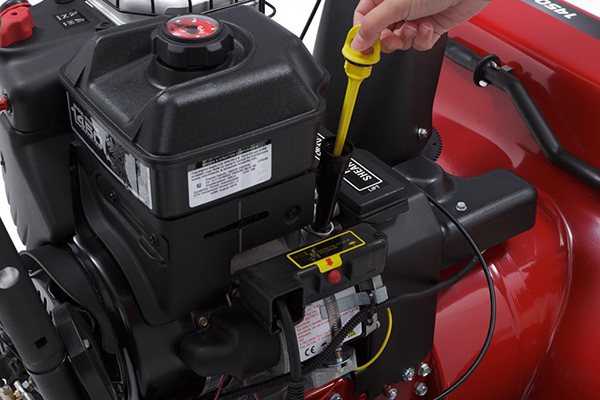
Snow blower engines do not have an oil pump - the lubricant penetrates to the parts by gravity. And this technique is always used at sub-zero temperatures. Therefore, we choose a product with low viscosity (SAE 30), class 5W (engine starting at temperatures down to -35°C).
Such oil will reach all the parts, and in cold weather the unit will start easily.
What else do you need to consider?
- Heat.
The cooling is air, the engine gets very hot, which means the oil must be resistant to overheating. - Type of fuel.
Snow blowers come in both gasoline and diesel engines (with a particulate filter), and the oils must be labeled accordingly. Take a closer look at low-ash lubricants: such oils will benefit both diesel and gasoline vehicles.
Before replacing, the engine oil system must be flushed. There are special additives for this, for example Motorbike Engine Flush Shooter from LIQUI MOLY.
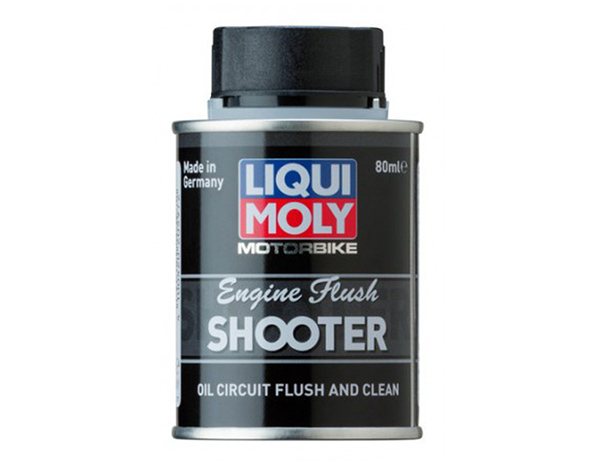
The product is cheap and effective.
Don't forget about the transmission
If you have a budget model of snow blower, then most likely the kit includes a grease fitting with grease. If there is a filler plug on the housing, then any transmission oil will do. We recommend Motorbike Gear Oil Scooter 80W-90 - this is a mineral lubricant in a convenient container with a pouring spout.

With this packaging you can refill the unit without funnels and syringes.
We protect the unit from condensation and icing
Let's remember the conditions under which a snow blower operates: alternating heating and cooling at sub-zero outside temperatures. Let's add to this the snow that sticks to the body and melts on it. The result is rapid aging of plastic and corrosion of metal.
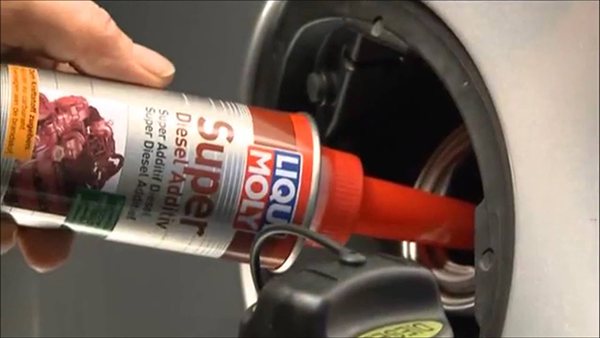
There is a simple solution - a special water-repellent spray Liqui Moly LM40. It is enough to treat external parts with this universal product to protect them from excess moisture and corrosion.
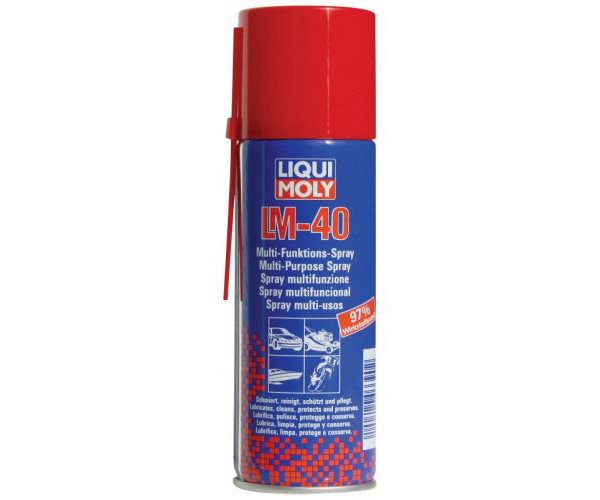
That's all. These simple recommendations are enough to ensure the serviceability of your snow removal equipment and significantly extend its service life.
How to choose oil for a snow blower gearbox?
A gearbox is a mechanism that, no less than the engine, needs continuous lubrication. Liquid gear oil is best suited for this purpose. Its main advantage is its excellent interaction with bronze, from which, in most cases, the gearbox is made. Transmission fluid has a homogeneous structure that does not change at low and high temperatures.
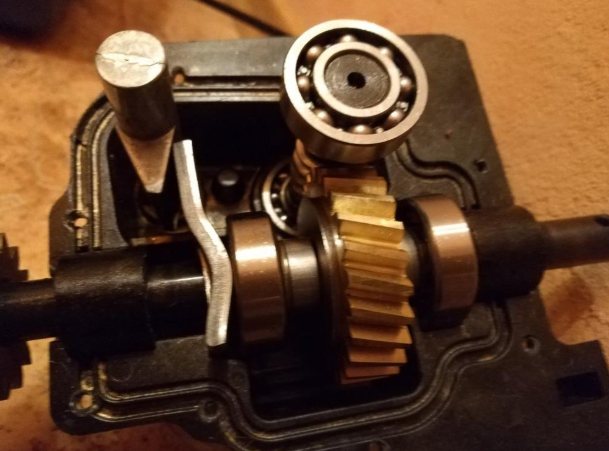
It is best to pour oils from Liqui Moly, Wolf and Kroon Oil into the snow blower gearbox. When operating a snow blower under extremely low temperature conditions, oils from the same manufacturers in combination with Xado brand additives show good results. Such lubricants evenly cover the moving parts of the gearbox with a thin but very durable film, which reliably protects them from wear and corrosion.
How to change the oil in a snow blower gearbox?
Manufacturers of snow removal equipment give different advice on how often it is necessary to change the gearbox oil of a commercial snow blower. First of all, you need to determine the intensity and operating conditions of the machine. If it is used every day, and cleaning is carried out in large areas with a large number of high snowdrifts and a thick layer of heavy sticking snow, then the lubricant must be changed every 50 hours. If conditions are more gentle, then the fluid can effectively work in the gearbox for 80–110 hours without replacement.
You need to change the lubricant in a clean, warm room with a flat floor. Before doing this, the snow blower must first be raised to gain access to the lower part of the gearbox.
The subsequent procedure is as follows:
- First, the car will need to be warmed up;
- Then the engine must be turned off and the sequential disassembly of the gearbox must begin;
- First of all, you need to unscrew 4 bolts and remove the protective metal cover located above the mechanism;
- After this, you need to remove the casing, unscrew 2 more screws and remove the shaft with the pulley;
- After this, you will need to carefully remove the gear from the shaft. If it does not come off, then this is most likely the result of it sticking to the shaft. Do not hit the gear with a hammer or other hard objects, as this may damage the bronze part. You can put the shaft with the gear in a container filled with a solution for unlocking locks and other mechanisms, and wait about 30–45 minutes;
- Next, all the gearbox parts will need to be placed in a vessel with clean gasoline - the fuel will clean the elements from carbon deposits, metal shavings and other harmful impurities;
- While the parts are in a container with gasoline, it is necessary to clean the space inside the gearbox compartment;
- After this, all elements of the mechanism must be thoroughly dried and installed in their regular places in the compartment;
- Next, you will need to add new lubricant using a syringe;
- At the end, all that remains is to put the protective cover in place and screw in 4 screws.
After reassembling the gearbox and adding new lubricant, you need to let the mechanism parts get used to each other. To do this, you will need to start a snow blower and walk around the area with it several times, removing only freshly fallen snow. After this, you can continue to operate the machine as usual.
Diesel engine oil
Snow blowers are often special automatic systems that operate on one of 2 types of engines:
- petrol;
- diesel.
The latter types of devices are among the most common. When choosing oil for diesel engines, you need to pay attention to their brand:
- For products of types D-242, experts recommend using M-8G2k oil, which can significantly increase the service life of the entire system.
- For engines of the YaMZ-236M2-4 type, it is advisable to use products of the M-8G2k and M-8DMk types. These brands of lubricants are very actively used in domestic types of cars and have proven themselves very well.
There are also other types of oils that should be selected according to the main characteristics of the snow blower.
